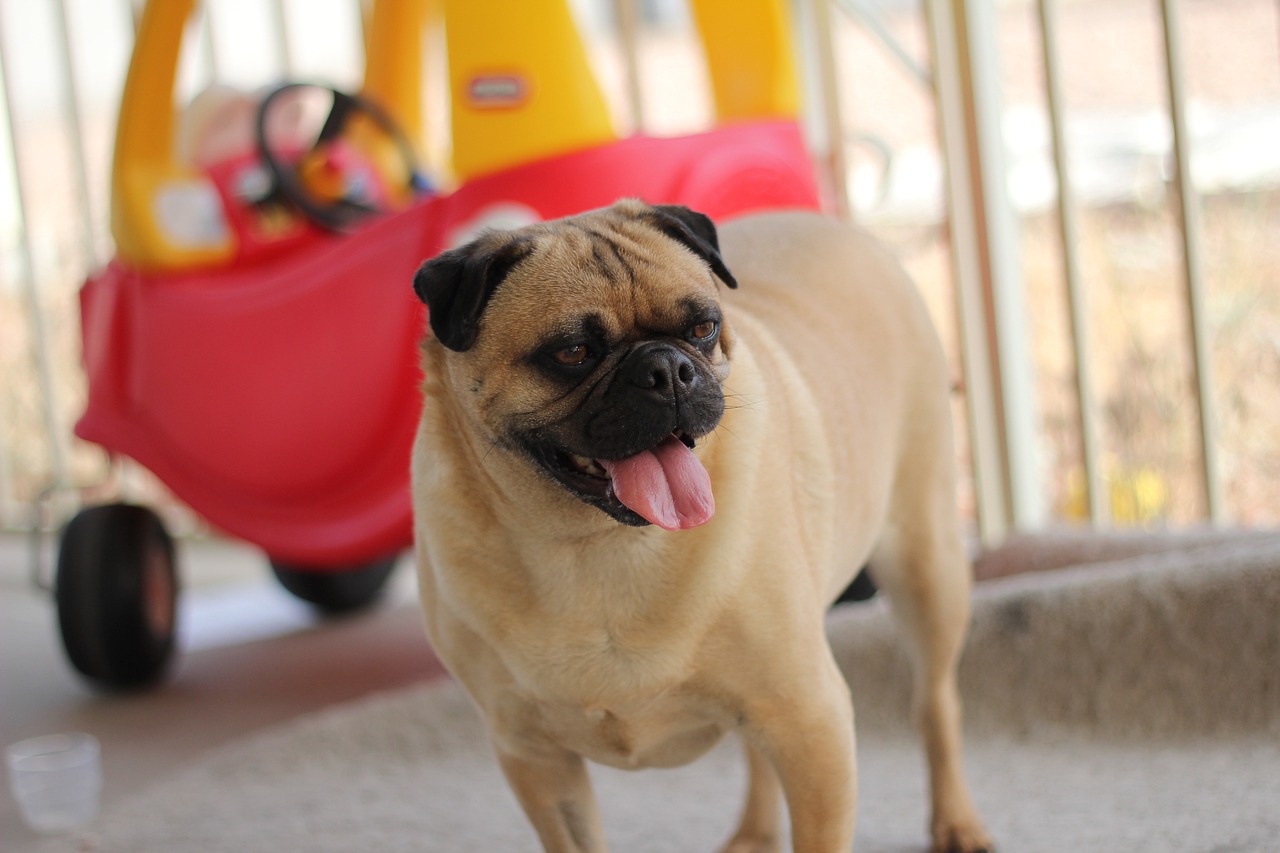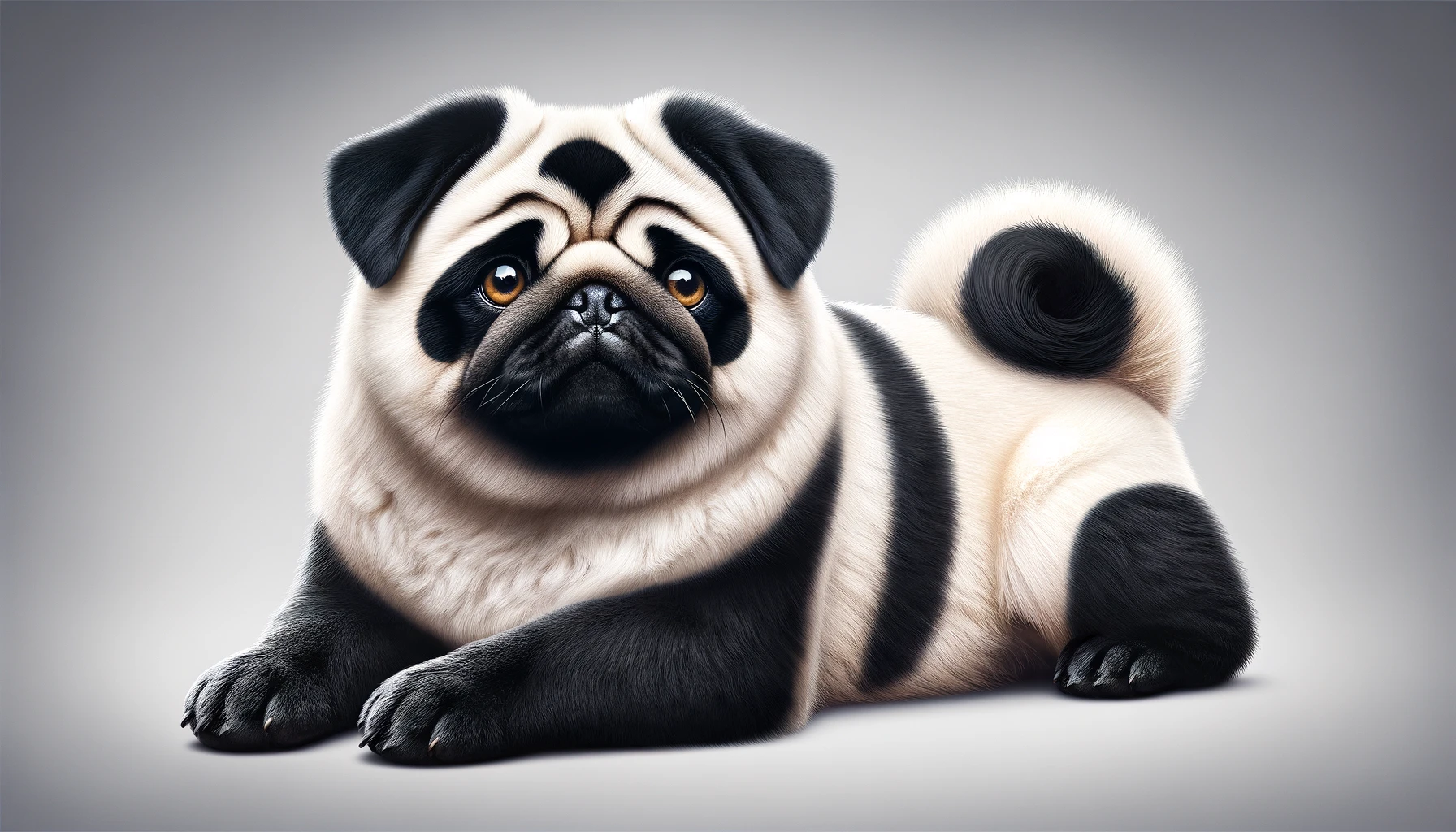Pugs are one of the most recognizable and beloved dog breeds, known for their expressive faces and charming personalities. Originating from China and later popularized in Western Europe, these small canines are distinguished not only by their distinctive physical features, such as a wrinkly, short-muzzled face and curled tail but also by their variety of coat colors. The color of a Pug’s coat can significantly affect its appearance, making each color variation unique in its way. While the breed standard recognizes a handful of colors, several other hues are also found within the breed, each carrying its own special appeal and fan base. This article will explore seven stunning Pug color variations, providing insights into how these colors can influence both the appearance and sometimes even the personality of these lovable dogs.
1. Fawn

Fawn is the most common and iconic color of the Pug breed. It ranges from a light, creamy beige to a deeper golden hue, with a distinctive black mask that accentuates the Pug’s expressive face. The fawn-colored Pug often has a soft, double-layer coat that sheds moderately throughout the year. The contrast between the light body and the dark facial features gives fawn Pugs a striking appearance that is highly cherished among Pug enthusiasts. This color also helps highlight the Pug’s deep wrinkles, especially around the forehead and nose, adding to their characteristic worried look. Owners and breeders alike prize fawn Pugs for their photogenic qualities and classic look.
2. Black

Black Pugs possess a certain elegance with their sleek, glossy coats that can range from jet black to a softer charcoal. Unlike their fawn counterparts, black Pugs do not have masked faces, allowing their facial expressions to shine through unobstructed. This solid coloring is less common than fawn but is equally recognized and admired within the breed standards. Black Pugs may have less visible wrinkles due to their dark fur, but this does not detract from their overall appeal. Their coat tends to appear shinier than that of lighter-colored Pugs, which makes them particularly striking in the sunlight.
3. Silver

Silver Pugs are a rarer find and are celebrated for their unique and enchanting coat color. This shade is a cool, pale grey that can sometimes appear almost white under certain lighting conditions. Silver Pugs may still exhibit the classic dark mask and ears, which provide a lovely contrast against their light silver fur. Like other Pugs, they have a double coat, but the silver color can make their shedding fur less noticeable on light-colored flooring and furniture. This color variant can be particularly captivating in puppyhood as the silver coat is exceptionally bright and vibrant at this stage.
4. Apricot

Apricot Pugs are similar to fawn Pugs but with a richer, deeper golden tone that resembles the color of a ripe apricot. This color can range from a vibrant, sunny hue to a deeper, more burnished orange. Apricot Pugs often retain the characteristic black mask, making their warm-colored fur pop even more. This coat color tends to darken as the Pug ages, sometimes developing a more pronounced richness that is highly valued among Pug lovers. The apricot coloration is also known for highlighting the Pug’s playful and affectionate nature, as it adds an extra touch of warmth to their appearance.
5. Brindle

Brindle Pugs are quite rare and boast a coat that features stripes of dark brown or black mixed with lighter colors like fawn or silver. This tiger-stripe pattern is unique in each Pug and does not follow a specific set rule in terms of design, making each brindle Pug distinctly one-of-a-kind. The brindle pattern is dynamic and eye-catching, often making these Pugs the center of attention. Due to the mixed colors, brindle Pugs can appear to change color in different lights or as they move, adding to their allure and mystique.
6. White

White Pugs are extremely rare and are not recognized by most breed standards, which makes them all the more sought after by certain enthusiasts. These Pugs have a pure, snowy coat without any markings. While stunning, the white coat can pose extra challenges in terms of grooming and skin care, as it can easily show dirt and may be more susceptible to sunburn. White Pugs share the same lovable characteristics as their more colorful brethren but offer a distinctive look that can be a real showstopper.
7. Panda

Panda Pugs, named for their resemblance to panda bears, are a newer and very rare color variant. They have distinct patches of black over white or fawn fur, especially around the eyes, ears, and across the body, mimicking the pattern of a panda. This striking appearance is the result of specific breeding practices aimed at achieving this unique look. Panda Pugs often attract a lot of attention due to their unusual coloring and adorable, panda-like features.
In conclusion, while the fawn and black Pugs are the most commonly recognized colors, the other shades like silver, apricot, brindle, white, and panda offer delightful variations that cater to different preferences in pet ownership. These colors not only add to the aesthetic diversity of the breed but also highlight the Pug’s endearing qualities, making each one a special companion regardless of its coat.
Frequently Asked Questions About Pug Colors
1. What is the most common color for Pugs?
The most common color for Pugs is fawn. This shade ranges from a light, creamy beige to a deeper golden hue and is easily recognizable by the distinctive black mask over the muzzle, which enhances the expressiveness of the Pug’s face. Fawn Pugs may also exhibit a trace of a black line running from the back of their head to their tail, known as a “trace.” The popularity of this color is due to its classic appearance, which adheres closely to the breed standard and is often depicted in media and popular culture, making it the color most people associate with Pugs.
2. Are black Pugs rarer than fawn Pugs?
Black Pugs are less common than fawn Pugs but are not considered rare. While fawn is the color most people think of when they imagine a Pug, black is equally recognized within the breed standard and is admired for its sleek, uniform look. Black Pugs have a solid, glossy coat with no markings, which highlights their velvety fur and expressive, wrinkled faces. This color variant offers a striking alternative to the traditional fawn and carries the same lovable Pug personality traits.
3. Can Pugs have a brindle coat?
Yes, Pugs can have a brindle coat, although it is quite rare. The brindle pattern consists of a mix of colors that produces a striped effect, typically involving shades of black over a lighter base like fawn or silver. Each brindle Pug has a unique pattern, which can range from subtle to highly pronounced stripes. This coloration is not standard and is not recognized by all breed registries, but it is highly valued among enthusiasts for its distinctiveness and dramatic visual appeal.
4. What is a silver Pug?
Silver Pugs feature a coat that is a cool shade of gray, ranging from light silver to a medium gray. This color is less common than fawn or black and gives the Pug an almost ethereal appearance, especially in contrast with their dark, soulful eyes and black facial mask. Silver Pugs may appear lighter as puppies and can darken slightly as they mature. The silver coat can make a Pug stand out in a crowd, offering an elegant alternative to the more traditional colors.
5. Is the white Pug the same as an albino Pug?
No, white Pugs and albino Pugs are not the same. White Pugs have a pure white coat without any other markings, but they still possess the normal pigmentation in their skin, eyes, and noses. Albino Pugs, on the other hand, lack pigment altogether, resulting in a very pale skin and red or pink eyes, which is due to the visibility of blood vessels normally masked by pigmentation. Albinism is a genetic condition that can affect all animals, including Pugs, and comes with various health concerns, such as sensitivity to sunlight and vision problems.
6. How rare are panda Pugs?
Panda Pugs are extremely rare and are a result of specific breeding practices aimed at achieving their unique black and white markings, which resemble those of a panda bear. This color pattern is not a natural variation within the Pug breed and is instead developed through selective breeding, sometimes involving crossbreeding with other dogs that carry piebald or similar marking genes. Due to their rarity and distinctive looks, Panda Pugs can be quite sought after but may also face controversy over breeding ethics.
7. Do the color of a Pug’s coat affect its personality?
The color of a Pug’s coat does not affect its personality. Pugs are known for their friendly, sociable, and affectionate nature, and these traits are consistent across all color variations. Personality in dogs is influenced more by genetics, upbringing, and individual temperament rather than coat color. Pugs of any color can display the charming characteristics that the breed is known for, such as their love of human companionship and their playful demeanor.
8. What color are Pug puppies when they are born?
Pug puppies can be born with any of the coat colors that are typical in adults, including fawn, black, silver, and rarely, brindle or white. The color they are born with is generally the color they will have throughout their lives, though some colors, like silver and fawn, might change slightly as the puppy matures and its coat develops fully. It’s also common for fawn puppies to be born darker and lighten as they grow older.
9. Are there any health issues associated with certain Pug colors?
Certain Pug colors, particularly those not recognized by major kennel clubs, can sometimes be linked to health issues. For example, dogs with lighter coats, such as whites or those with piebald or albino patterns, may have increased health risks such as skin cancer or sensitivity to sunlight. Additionally, some rare colors might be the result of breeding practices that do not prioritize health, which can perpetuate genetic disorders. It is important for potential Pug owners to seek reputable breeders who test for common health issues regardless of the coat color they specialize in.
10. Can Pugs have patches of different colors?
Yes, Pugs can have patches of different colors, particularly in less common variations like the piebald or panda pattern. These patterns involve patches of color—often black—over a white or very light base coat. This type of coloration is very rare and is usually the result of specific genetic influences that affect pigmentation distribution. Pugs with such distinct patches are often very striking in appearance, but this is not a typical color pattern for the breed and is not recognized in breed standards for show purposes.
 Toledo, United States.
Toledo, United States.